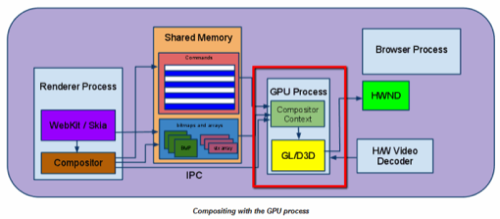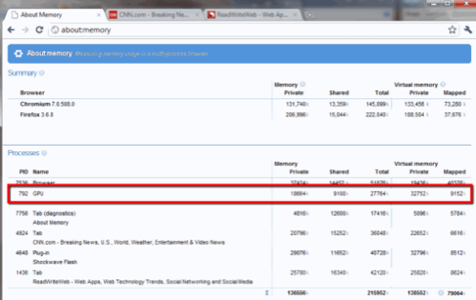Google just confirmed that Chrome will soon support GPU hardware acceleration. Developers can speed up the rendering of complex pages by offloading a lot of the processing to a computer’s graphics card, which – after all – was specifically designed for these tasks. As browser developers continue to try to increase the responsiveness of their applications, hardware acceleration is the natural next place to look for performance gains. Microsoft is also working on hardware acceleration for the next version of its browser. The company plans to unveil the first complete build of Internet Explorer 9 next month. Mozilla, too, offers support for GPU acceleration in the latest beta version of Firefox 4 for Windows.

Vangelis Kokkevis, one of the engineers behind the Chromium project, notes that Chrome currently only uses hardware acceleration for displaying some content. Now that the basic infrastructure is in place, however, the Chromium team expects to move “even more of the rendering from the CPU to the GPU to achieve impressive speedups.” In the long run, Google will likely also use this same infrastructure to offer support for accelerated 3D graphics in the browser.

Give it a Try
To try Chrome’s built-in GPU acceleration, you need to run a cutting edge version of Chrome (even more cutting edge than the canary builds). You can find recent build of Chromium – the open source project behind Chrome – here. You can easily install Chromium parallel to Chrome and the two installs generally don’t interfere with each other.
By installing Chromium, you will also get a chance to test Google Chrome Labs. You can find more information about this feature here.
Once installed, you need to run the application with the –enable-accelerated-compositing flag. To do so, you can either run the program from the terminal and set this switch by hand, or – in Windows – check the properties for the executable and append the flag to the target in the properties dialog.
Chances are that you won’t notice too much of a difference right now, though you will probably notice some speed-ups while viewing highly complex pages.
More Technical Details
If you are interested in the exact details of how Google’s hardware acceleration in Chrome works, have a look at this design document Google also just published.

Tip of the hat to Conceivably Tech for spotting this new feature first.









